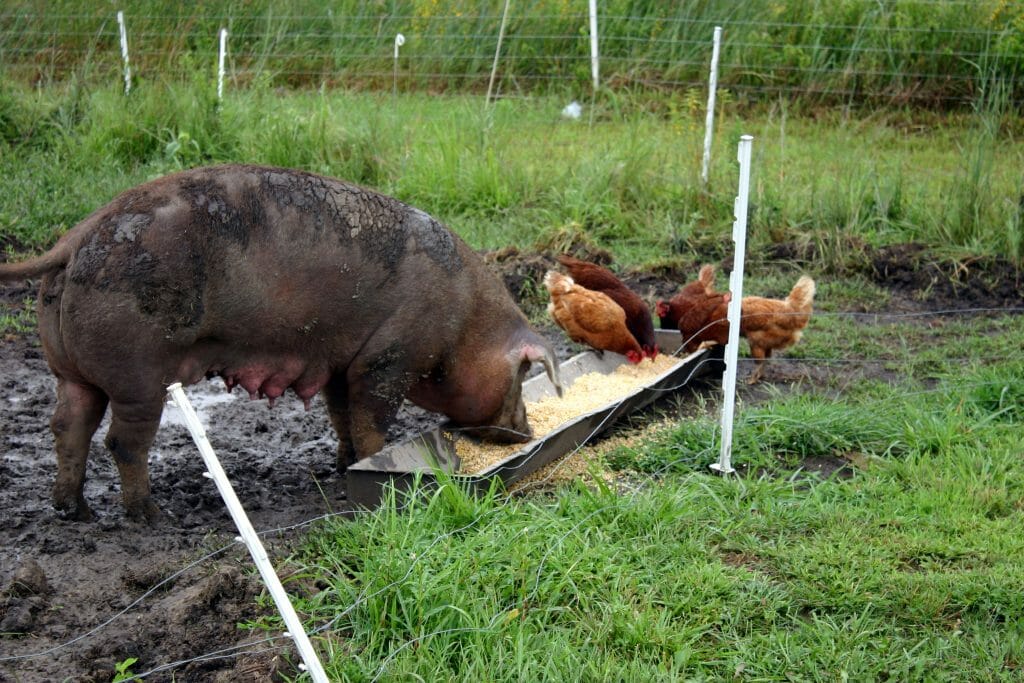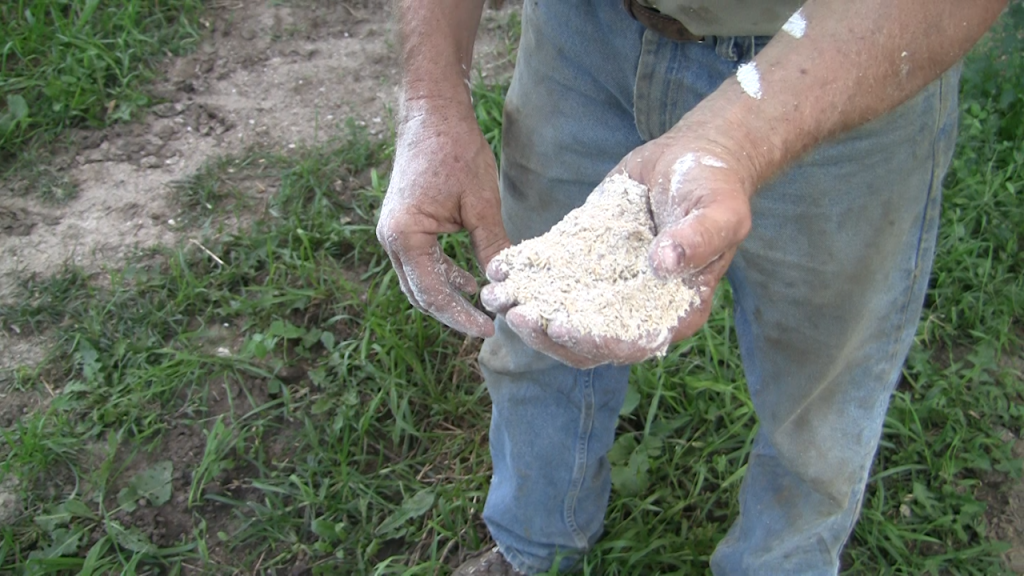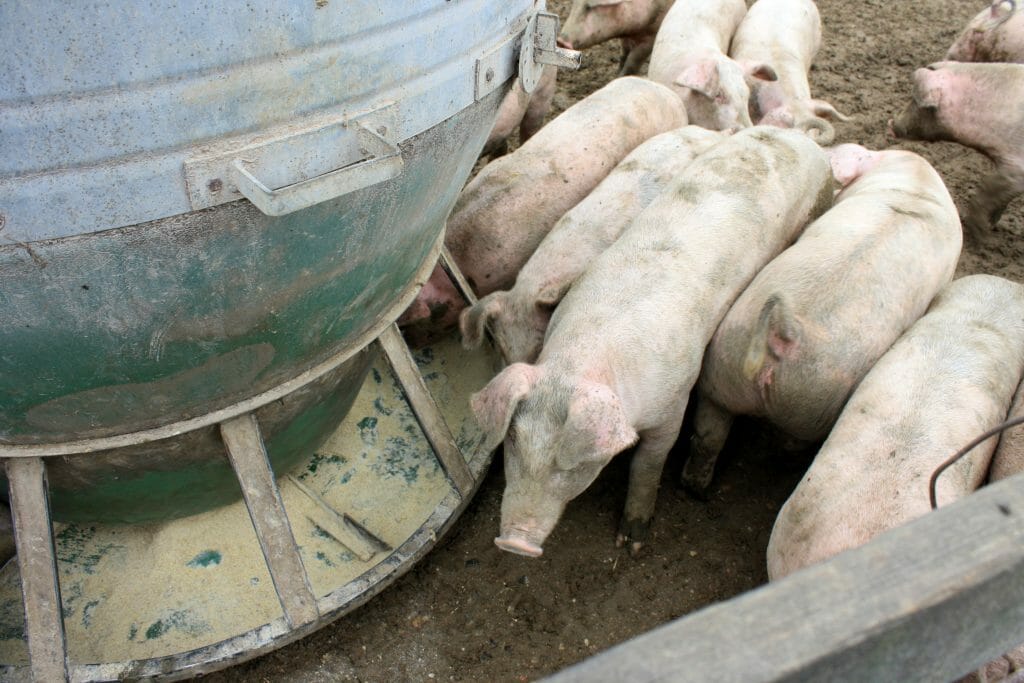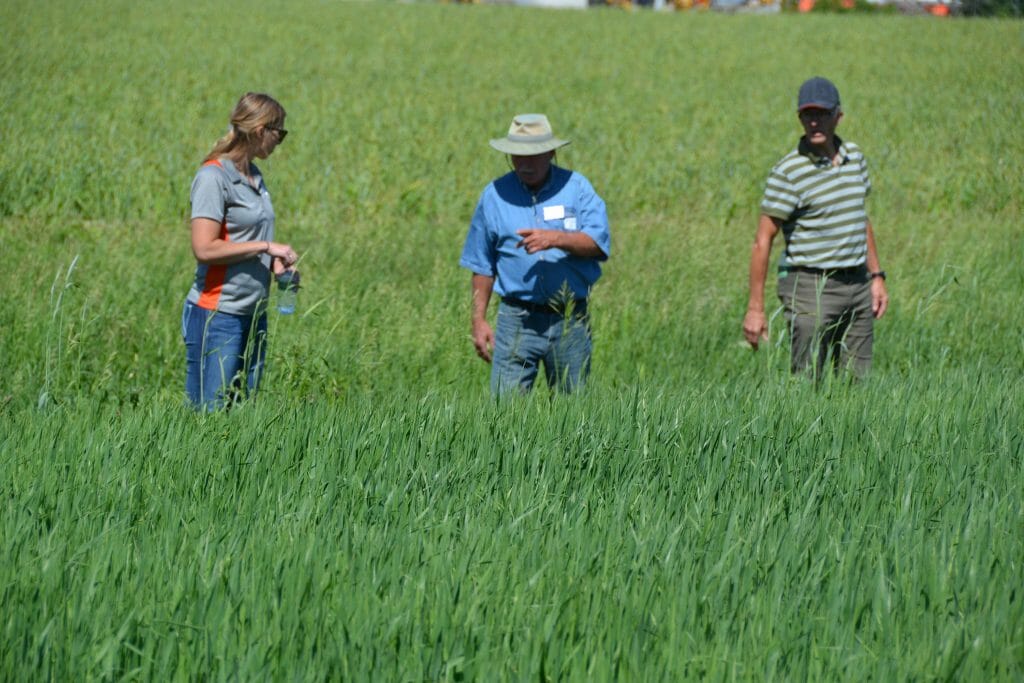Milling Small Grains for Livestock Feed
Wondering about incorporating more small grains into animal rations but worried that they will be “floury” or “dusty”? Typical on-farm milling equipment used to grind corn can be too hard on softer small grains and create too finely ground grain. With a few simple tricks you can avoid these pitfalls and create nutritious feed with small grains. On our June shared learning call we welcomed Cindy McCullough from Blue Stem Organic Feed Mill, who was a great source of information on milling equipment and feeding strategies for small grains. She led us through some of the pressing frequently asked questions about milling small grains for animal feed from tailoring the grind to different livestock and production phases to strategies on keep dust down and milling equipment considerations.
What is the ideal grind for animal feed?
First, it’s important to understand what kind of a grind you’re going for with your animals. What’s too big? What’s too small? On one end Cindy says, “if you feed whole grain it’ll pass right through the animal,” which leads to losses in nutritional quality and energy gained per pound of feed. Additionally, if the grind is too course “poultry will pick the parts they like out, so getting a finer grind is important so they eat the whole mixture of feeds and not the choice bits. The grain needs to be homogenous enough so that it holds the mineral and protein up and they’re not able to pick through their feed.” On the other hand, “you want to make sure you don’t get it too fine when grinding for pigs and poultry because the danger of ulceration is high.” So the target is a kind of happy medium, ground enough to make the grain digestible and evenly mixed, but not too finely ground as to create health issues like ulceration or even coughing and sneezing at the feed bunk.
Another factor in deciding how fine or coarse to process your feed will be the production phase of the animal. In general, younger animals make better use of a finer-ground feed and older animals are optimally served with a coarser mix. For example, “In broilers we have three growing phases. Starter feeds used from zero to three weeks we use a 1/8-inch screen, the finest grind that we do,” Cindy says. “Then for growers we’ll mix 50 percent of this fine grind [1/8-inch screen] and 50 percent medium grind with a ¾-inch screen. This starts at around two to three weeks and continues until the birds are five weeks. Then after five weeks we move to ¾-inch screen grind on all feed and throw in some whole oats and wheat so the birds have something to scavenge for.” For pigs it’s a similar process of starting out fine and getting coarser. Cindy recommends sticking to a minimum of 3/4-inch screen from weaning diets on up to prevent ulceration. Large ruminants are more forgiving on grind size and are able to digest most grains so long as it is cracked or crimped. Fine grinding grains should be avoided in cattle diets because fine-ground grains, “fines”, quickly ferment in the rumen. Becca Stokes, KWS feeding nutritionist, recommended at Loran Steinlage’s field day not to exceed more than 6 percent fines in cattle feed to prevent acidosis.
If I am going for a finer grind how can I keep the dust down?
Whether feed is intentionally or unintentionally fine there will be cases where it’s necessary to keep dust down. In these cases, particularly for those finely ground starter feeds, Cindy adds molasses or oil to the feed to bind the ingredients together – minimizing dust. “If you add molasses to the grinder-mixer, it will hold the fines down and make the feed more palatable,” Cindy says, “horses and cows particularly like this. Molasses is good energy as well!” Some oil options would be soy, canola or flax oil, with soy being the cheapest of these three options. Claus Nymand, KWS agronomist, shared another strategy for limiting fines at Loran’s field day suggesting to harvest and store hybrid rye at 15 percent moisture with air instead of the more common 13 percent desired for food or seed grade grains.
What are the benefits of adding small grains to feed?
One of the benefits of small grains in a diet is that they have more fiber than the usual ingredients (corn and soybeans). Much of the fiber in an animal diet comes from forages like hay, so if hay is expensive incorporating small grains can help alleviate some costs of increasing fiber in the diet. Small grains also tend to have a higher protein content than corn so you can also offset other ingredients like soybean meal if the economics are in your favor. Additional protein adds flavor to meat and eggs and increases omega-3s.
What kind of equipment do I need to grind small grains for feed?
The most common kind of on-farm grinding equipment is a grinder-mixer, which as its name indicates both grinds and mixes feed in the same machine. Farmer Ed Mosbach uses a grinder mixer on his farm to mill feed for his cattle and poultry. His process is to grind the corn in the grinder and then add his protein (such as soybean meal), minerals and small grains into the grinder via a side shoot. Grinder-mixers are vertical machines where ingredients go in the top and mixed feed is pushed out the bottom. This can cause difficulties with mixing feed thoroughly as heavier items (corn) will be pulled to the bottom by gravity and lighter items (soybean meal, minerals, etc.) will stay at the top. Ed achieves a more even feed distribution of grain in his feed by adding the mix into the side shoot gradually over the course of the grinding time. He also runs the grinder-mixer at half throttle to get a better, more consistent grind than full throttle and he doesn’t fill the grinder all the way full. Keeping his batches under two tons leaves some space for the grain to churn and mix more evenly.
Two other options for processing small grains are hammer or roller mills, which are particularly useful for processing small grains with hulls like barley and oats. These machines, when properly set help crack the grain open so the digestive juices can get in there and break it down without over processing the grain and creating too many fines. The two kinds of mills are mechanically different, creating different effects. “When you run oats through a hammer mill it looks like fluff, beats the snot out of it,” Cindy poetically explains. “If you have a roller mill you’d crimp the small grain, it’s ground or crimped but not beaten up. This helps with palatability.”
What kind of maintenance and upkeep do these machines need?
The process of grinding involves squishing grain between two hard objects, so there is physical wear and tear on the elements that exert this pressure. In a hammer mill you have to rotate the blades so that they don’t get rounded with repeated use. “You want a sharp edge so you get a good crack,” Cindy says. For roller mills, you need to make sure the rollers are the right shape. If they get too rounded or worn it’ll show up as a poor grind. In addition to caring for the surfaces that actually do the grinding, you’ll need to make sure the motors on the grinder and your auger are in good working order.
For more information on feeding small grains such as appropriate inclusion and corn replacement rates for various small grains in rations, check out this infographic outlining feed rates for livestock, and these blogs on feeding oats to pigs and barley to pigs. Small grains shared learning calls are held the first Friday of the month from noon to 1. To receive announcements about upcoming calls sign up for our monthly small grains e-newsletter.





